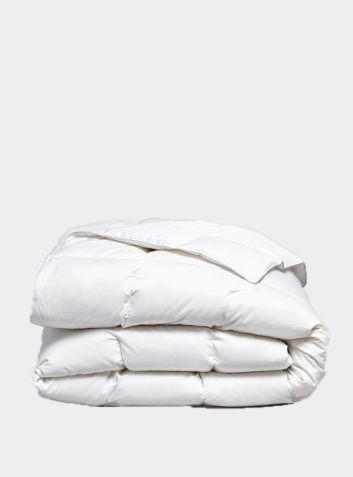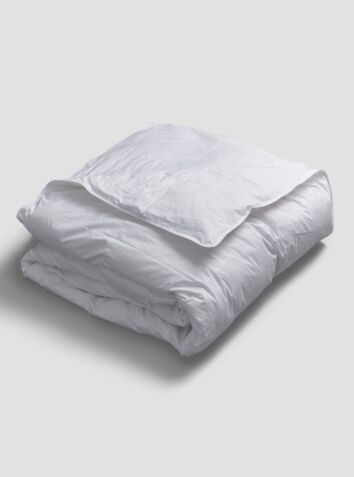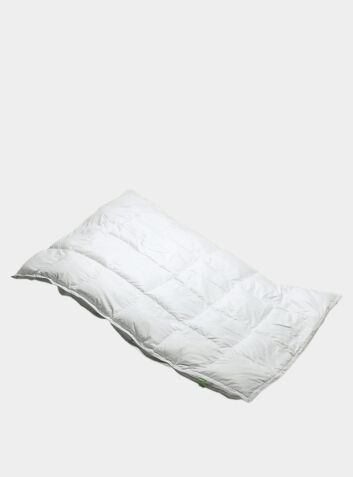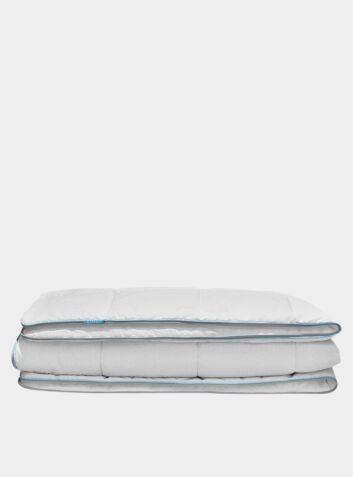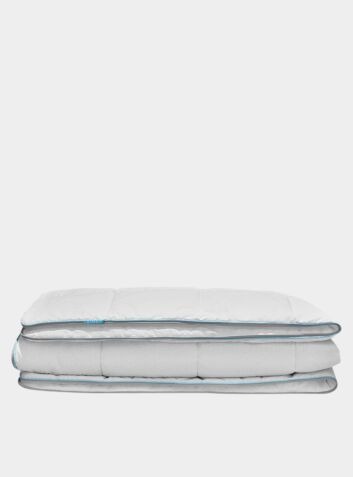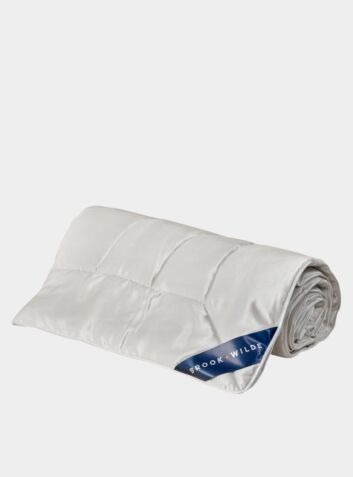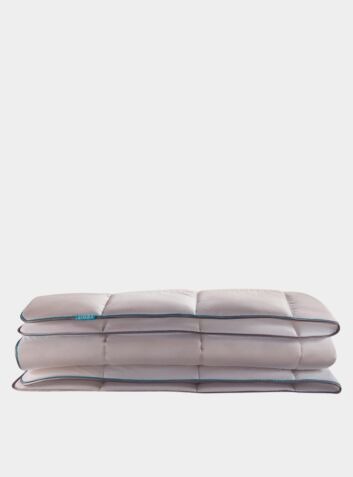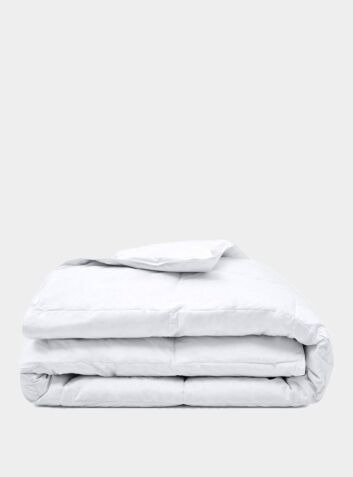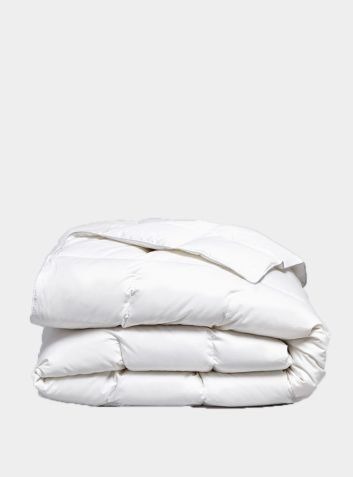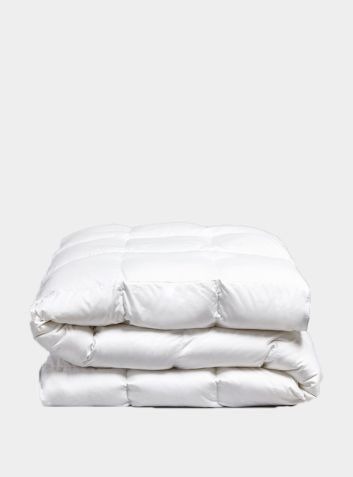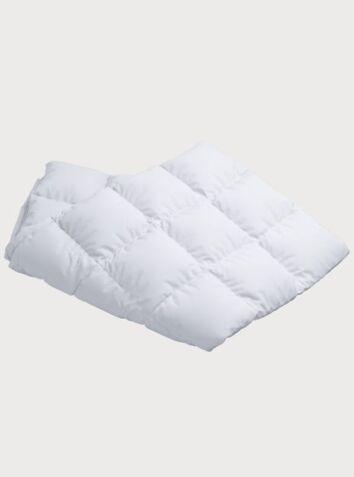Duvet Tog Buyers Guide


Sleep is the one thing that we should never compromise on, we all need a good night’s sleep to function well. The perfect duvet can make all the difference to getting a comfortable night’s sleep but with so many different duvet options available and with tog ratings, filling, and size to think about it can be very confusing selecting the right one.
This guide will focus mainly on tog ratings to help you select the right one for you.
Duvet Tog Ratings Explained
When buying a duvet, you will want to know how warm it will keep you, especially in winter, so it is important to find out its “tog rating”.
What does “tog” mean?
The word “tog” stands for “Thermal Overall Grade”. Put simply, your duvet’s tog rating refers to the ability of your duvet to trap heat and retain warmth. The higher the tog rating, the warmer your duvet. The lower the tog rating, the cooler you will feel. If your duvet tog is too high, you run the risk of waking up hot and sweaty, if it’s too low you will be too cold and experience an uncomfortable night’s rest.
Do remember when buying a new duvet that duvet thickness and heaviness doesn’t always equate to warmth. Some materials and fillings can be heavier than others but provide a cooler sleeping experience. Duvets filled with feathers or down naturally have better thermal properties than synthetic versions which means you do not need as much filling to achieve the same rating, often making them lighter.
What are the different tog ratings?
Duvet tog ratings in the UK start at 1 (the coolest) and go up to 15 (the warmest). A good starting point is to select a duvet according to the season. If you're uncertain about which tog rating suits each season best, here's a short guide:
Which tog is best for each season?
Best Summer Duvets
1 to 4.5 tog range is the best choice to stop you overheating during those hot summer nights. 4.5 tog is the most common. This is also a tog rating that hot sleepers or menopausal women who suffer with night sweats may want all year round as it has more breathability.
Best Spring and Autumn Duvets
Best For Spring and Autumn: 7 to 10.5 tog range is a good choice, offering enough warmth without being stifling, the scale depending on which season you’re entering as you may need extra insulation in October and November but less in April and May.
Best Winter Duvets
10.5 to 13.5 tog are best suited to those cold wintery nights. 13.5 tog is the most common. For those who really feel the cold, there’s only one option – a tog count of 15. If this still doesn’t do the trick you might have to invest in an electric blanket or a hot water bottle!
Best All Year Round
If you don’t want to buy multiple duvets or are short on storage space a good compromise is a 10.5 tog. It will strike a balance between warmth and breathability, offering enough insulation for cooler nights whilst providing a comfortable sleep during warmer seasons.
Best All Season
Alternatively consider investing in an all-seasons duvet which is made up of a higher and lower tog duvet combined (usually a 9 and a 4.5 tog) that can be used separately or fastened together according to the season - for the colder winter months you can create a cosy duvet with a tog rating of 13.5 and above. This is a combination that will take you through the whole year as it effectively gives you three duvets in one.
What duvet tog should I get?
This will mainly come down to your body’s individual ability to regulate temperature, your home’s heating system and how well your bedroom retains heat through the night, the climate you live in, and the time of year. If you are prone to overheating in bed, you are probably better selecting a duvet tog rating between 4 and 7.5, which will not trap too much heat nor let you get cold during the night. If you often feel chilly at night, one of the higher togs from 7.5 to 10.5 might be suitable. If you are still feeling chilly or have a very cold bedroom, then the highest and warmest tog ratings from 10.5 to 15 might be for you.
Another factor to consider is whether you share the duvet with another person who has different requirements. One solution here is to use the Scandinavian sleep method, where each person chooses their own single duvet with a tog rating to suit them or alternatively, there are now duvets available which are divided down the middle with each half having a different tog count.
We would always recommend going lower than higher in terms of the tog rating because it’s easier to warm-up than it is to cool down.
What is the ideal tog rating for children?
Children are not so well equipped at regulating their body temperature as adults are so therefore require thinner duvets. You need also to bear in mind the temperature in their bedroom too. If their bedroom has a consistent overnight temperature between 18°C-20°C, then a 4.5 tog duvet is suitable for the summer and a 7 to7.5 tog duvet in winter, when temperatures drop. If you have a warmer house, a 4.5 tog duvet may be suitable all year round by adding an extra blanket on top on colder nights.
Duvets and pillows are however a health hazard for babies under 12 months as they can lead to overheating and suffocation. Consider instead a baby sleeping bag or blanket.
How do togs work with wool duvets?
Wool is naturally temperature regulating so this means it does not have a fixed tog rating but has heat measuring equivalents instead such as Light, Medium and Warm. A Light duvet generally equates to 2-5 tog, while a Medium is 7-10 tog and Warm is 11-14 tog.
Are there other factors to consider when choosing a duvet?
Duvet warmth isn’t the only factor to consider when choosing a new duvet; you’ll also need to take the filling and the duvet casing into account, See our guide to the different types of natural and synthetic duvet fillings and why you might want to consider each.

